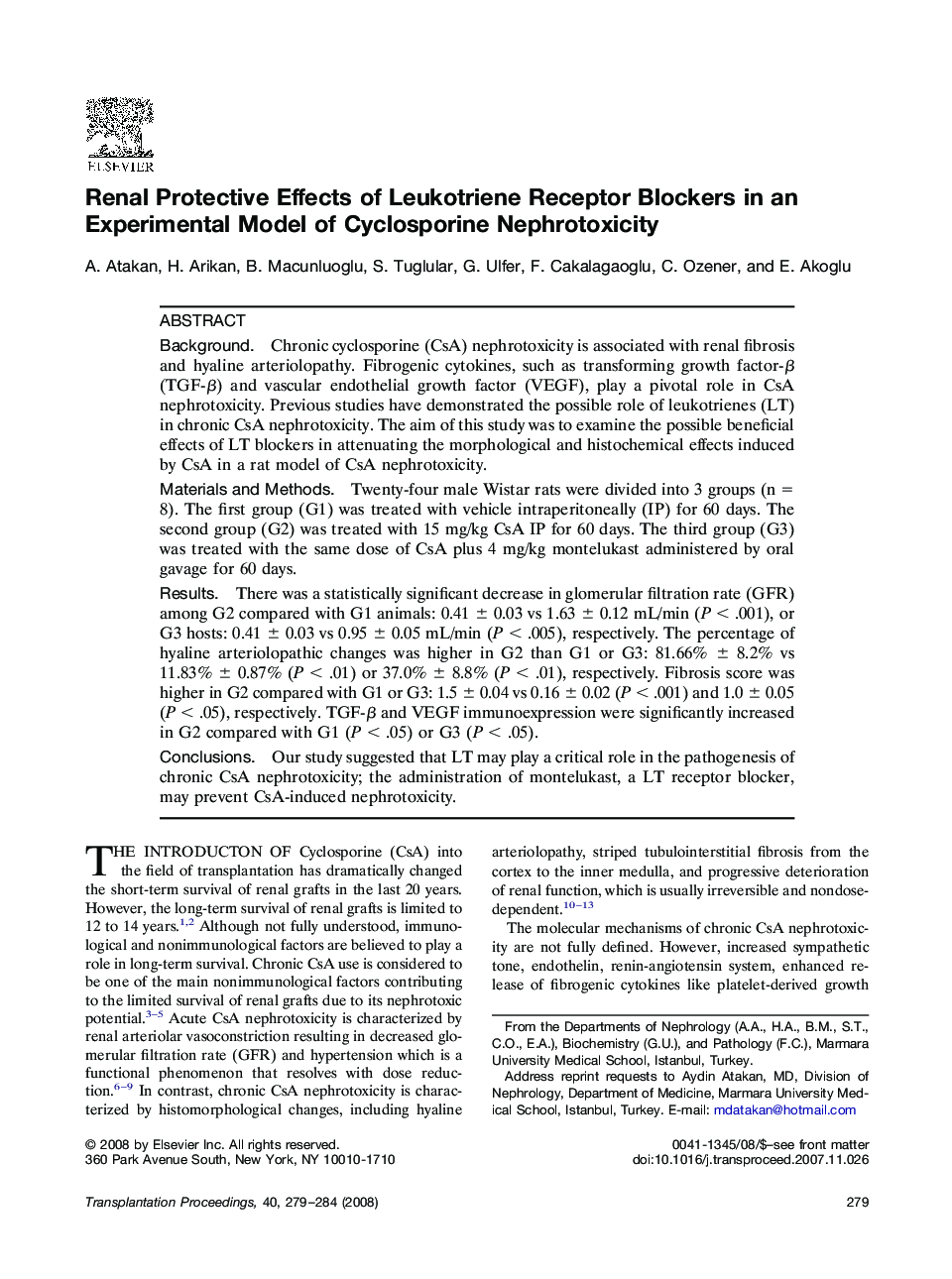| Article ID | Journal | Published Year | Pages | File Type |
|---|---|---|---|---|
| 4260485 | Transplantation Proceedings | 2008 | 6 Pages |
BackgroundChronic cyclosporine (CsA) nephrotoxicity is associated with renal fibrosis and hyaline arteriolopathy. Fibrogenic cytokines, such as transforming growth factor-β (TGF-β) and vascular endothelial growth factor (VEGF), play a pivotal role in CsA nephrotoxicity. Previous studies have demonstrated the possible role of leukotrienes (LT) in chronic CsA nephrotoxicity. The aim of this study was to examine the possible beneficial effects of LT blockers in attenuating the morphological and histochemical effects induced by CsA in a rat model of CsA nephrotoxicity.Materials and MethodsTwenty-four male Wistar rats were divided into 3 groups (n = 8). The first group (G1) was treated with vehicle intraperitoneally (IP) for 60 days. The second group (G2) was treated with 15 mg/kg CsA IP for 60 days. The third group (G3) was treated with the same dose of CsA plus 4 mg/kg montelukast administered by oral gavage for 60 days.ResultsThere was a statistically significant decrease in glomerular filtration rate (GFR) among G2 compared with G1 animals: 0.41 ± 0.03 vs 1.63 ± 0.12 mL/min (P < .001), or G3 hosts: 0.41 ± 0.03 vs 0.95 ± 0.05 mL/min (P < .005), respectively. The percentage of hyaline arteriolopathic changes was higher in G2 than G1 or G3: 81.66% ± 8.2% vs 11.83% ± 0.87% (P < .01) or 37.0% ± 8.8% (P < .01), respectively. Fibrosis score was higher in G2 compared with G1 or G3: 1.5 ± 0.04 vs 0.16 ± 0.02 (P < .001) and 1.0 ± 0.05 (P < .05), respectively. TGF-β and VEGF immunoexpression were significantly increased in G2 compared with G1 (P < .05) or G3 (P < .05).ConclusionsOur study suggested that LT may play a critical role in the pathogenesis of chronic CsA nephrotoxicity; the administration of montelukast, a LT receptor blocker, may prevent CsA-induced nephrotoxicity.
